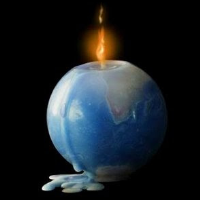Temperatures Rising as Belief in Global Warming Drops

If you think it’s hot now, wait until 2041. Even as a recent poll from Stanford University shows a two-year decline in support for government action on global warming, a new study out of UCLA predicts 4-to-5-degree average temperature increases in Southern California by the middle of the century.
The UCLA study recalculated and localized 22 global climate models, integrating them into a projection that created a 2041-2060 forecast for the entire region. “The changes our region will face are significant, and we will have to adapt,” said Alex Hall, an associate professor in UCLA's Department of Atmospheric and Oceanic Sciences who led the the team of researchers that produced “Mid-Century Warming in the Los Angeles Region.”
“Now that we have real numbers, we can talk about adaptation,” Hall said. But not everyone is buying his numbers. The Stanford survey, published in May, shows that support for various policies that address climate change dropped by an average of five percentage points since 2010.
Stanford pollsters speculated that the drop was a result of a cooler 2011 than expected and hot political rhetoric expressed during the Republican presidential primary. Virtually none of the GOP candidates expressed, during the campaign, the belief that humans were major contributors to climate change.
For example, Newt Gingrich said, “I want to be clear: I don't think that we have conclusive proof of global warming. And I don't think we have conclusive proof that humans are at the center of it.” Rick Santorum, runner-up to the eventual winner, Mitt Romney, argued, “There is no such thing as global warming. . . . It's just an excuse for more government control of your life, and I've never been for any scheme or even accepted the junk science behind the whole narrative.” And Romney opined, “My view is that we don’t know what’s causing climate change on this planet.”
UCLA researchers say they used computers that made around 1 quintillion—that’s a 1 followed by 18 zeroes—calculations to produce a climate study 2,500 times more precise than previous models. They said that actions taken now to reduce greenhouse gases could mitigate their results, but even if those efforts were wildly successful (an unlikely scenario) their forecast would still be 70% accurate.
The climate study predicts the biggest increases in Wrightwood (5.37 degrees), Big Bear Lake (5.23), Palm Springs (5.15), Palmdale (4.92), Lancaster (4.87), Bakersfield (4.48) and Santa Clarita (4.44). Cities in coastal areas—Oxnard (3.68 degrees), Venice (3.70), Santa Barbara (3.73), Santa Monica (3.74), San Pedro (3.78), Torrance (3.80), Long Beach (3.82) and Santa Ana (3.85)—fared the best.
Downtown Los Angeles checked in at 3.92 degrees. Predicted temperature rises for other locales included: Eagle Rock (3.98), Glendale (3.99), Pasadena (4.05), Pomona (4.09), San Fernando (4.19), Riverside (4.23) and Woodland Hills (4.26).
–Ken Broder
To Learn More:
Mercury Rising: Greater L.A. to Heat up an Average 4 to 5 Degrees by Mid-Century (by Alison Hewitt, UCLA Newsroom)
Climate Change in L.A. (UCLA Report)
Study Predicts More Hot Spells in Southern California (by Louis Sahagun, Los Angeles Times)
Support for Climate Change Action Drops, Stanford Poll Finds (by Rob Jordan, Stanford University)
Trends in American Public Opinion on Global Warming Policies Between 2010 and 2012 (by Jon A. Krosnick and Bo MacInnis, Stanford University (pdf)
- Top Stories
- Controversies
- Where is the Money Going?
- California and the Nation
- Appointments and Resignations
- Unusual News
- Latest News
- California Forbids U.S. Immigration Agents from Pretending to be Police
- California Lawmakers Urged to Strip “Self-Dealing” Tax Board of Its Duties
- Big Oil’s Grip on California
- Santa Cruz Police See Homeland Security Betrayal in Use of Gang Roundup as Cover for Immigration Raid
- Oil Companies Face Deadline to Stop Polluting California Groundwater





